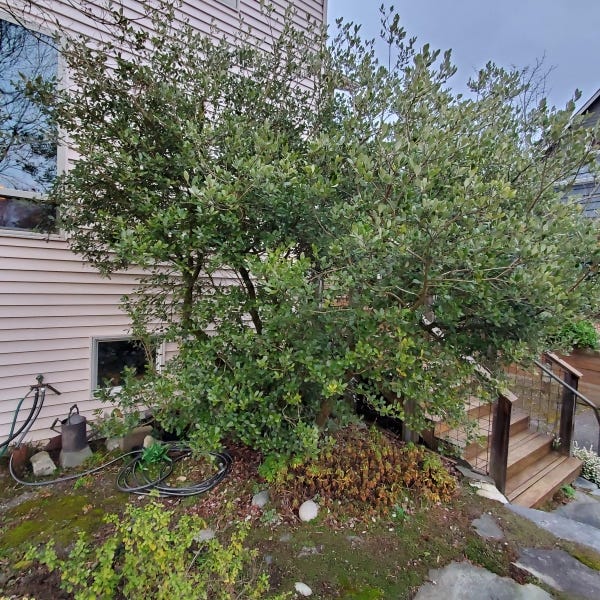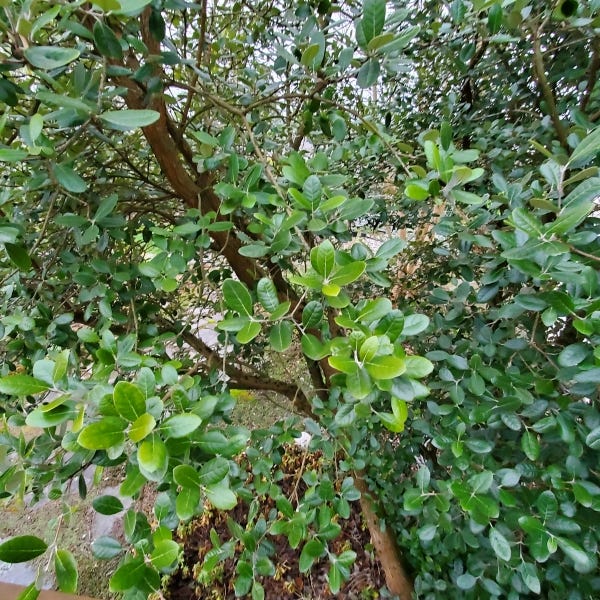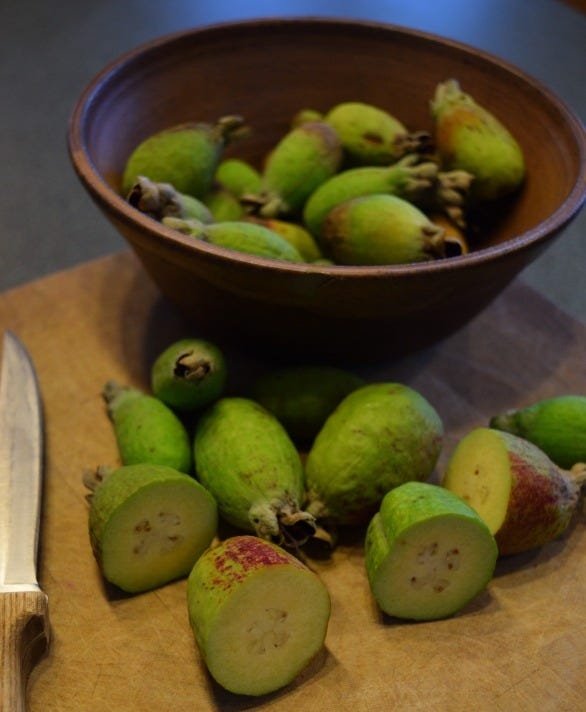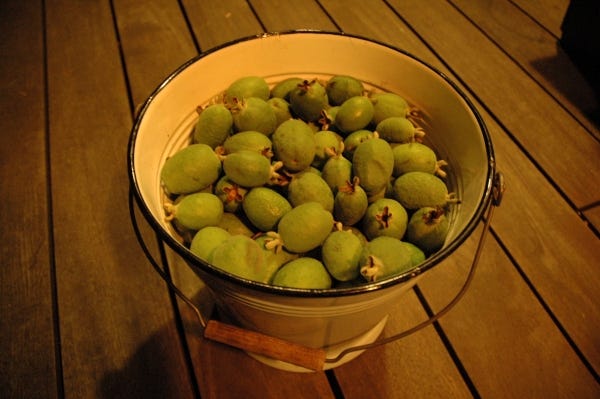Bring South America’s ‘Pineapple Guava’ Into Your Orchard
Feijoa Sellowiana seems increasingly possible in NW gardens
Feijoa first amazed me when I snacked on its flowers. I can’t think of any other fruiting plant that I’d even consider saying that about; who eats fruit tree flowers? But these things are amazing.
The white petals reach toward one inch long. Their cotton-colored exterior lobes curl inward, hiding a pink inner surface. They surround a mini forest of dark red stamens topped with puffs of bright yellow pollen. They perfume the late June breeze with a hint of sugar.
The bees must love them as much as I do, and I share the petals with hungry birds.
To taste them, you pick the flower and snip off the stamens, dusting away the pollen, then pop those fleshy petals into your mouth and enjoy the flavor of sweet cream swirled with a dollop of honey. At the height of their freshness, I keep picking and eating the flowers on the larger of our two feijoa bushes because, well, the tree is covered in them. There are plenty for me, for the critters, and for the fruit.
Perhaps that’s enough poetry about feijoa’s amazing flowers. I could go on. But there’s more to love about this unique fruit.
The plant is sometimes called pineapple guava, fig guava or guavasteen. In botanical Latin it’s Feijoa Sellowiana, but some call the genus Acca and not after the Spanish botanist Don da Silva Feijoa, for whom it was named. It is a sub-tropical, multi-trunked shrub or small tree of the Myrtle (Myrtaceae) family, which also includes guava and eucalyptus. Although native to the hills of southern Brazil, northeast Argentina and neighboring Paraguay and Uruguay, it’s a favorite in New Zealand and is commonly grown in Mexico and California as well.
None of those climates is quite like ours, so I was told that growing it in a maritime Northwest garden was iffy. Sunset lists them as marginal in Zone 6 but possible in zones 7 and beyond, but Raintree says grow them in zones 8-11. Full sun and regular water are required, and they can be hardy to about 15 degrees F. We’ve never seen winter die-back. We’ve also never seen them attacked by pests or diseases.
We planted two of them. Even though they are self-fertile, experts say they fruit better with another pollinizer, but they can be easily hand-pollinated. We planted one six feet from the house on a south-facing wall, protected on one side by our front steps and with a stone walkway in front of it. The other went out into our terraced, south-facing front garden, backed by a stone wall. Both are on our drip irrigation system and get fertilized with compost every few years and mulched with arborist chips.
After about 10 years, the plant by the house is 15 by 8 feet and gets taller and wider before periodic pruning to keep it away from the house. The exposed front garden plant is significantly smaller, perhaps 10 by 5 feet, and hasn’t required much pruning. In ideal conditions, they can get 18-25 feet tall.
The evergreen shrub has glossy green leaves that are silvery on the underside and oval but close to round. In the Bay Arey, feijoas are planted as a hedge (they are easily pruned and shaped), and the foliage can get dense enough to hide bird’s nests. They do a great job of hiding the fruit, even when it’s fully developed.
Fruiting did not begin until the plants were maybe six years old, although we discovered the dreamy flowers in the early years. The fruit, a rotund, pale green oval with a puckish calyx, can reach three inches in our climate. They can get a mottled yellow or orange blush when ripe. Slicing them open reveals light yellow or white flesh with insignificant seeds surrounded by thin pulp.
Feijoas fruit best in a warm summer, and they require a long season to ripen. They also need winter chilling to flower well, but they may respond to an early warm spell and then their flowers succumb to a spring frost. A sudden autumn frost can damage the crop, which falls off the plant when ripe. We typically notice them on the ground after a big windstorm in late October and start gathering them. By mid-November the entire crop will be in, amounting to perhaps a quarter of a bushel from both plants.
As they finish ripening on the counter, the kitchen is filled with their unique smell, a bit sharp—almost metallic—but promising sweetness. The taste is similarly distinctive. “Pineapple guava” somewhat describes the blend of acidic, sweet and tart, although you can detect hints of strawberry and banana too. The slightly gritty flesh leaves an astringent aftertaste that is not unpleasant.
It takes a lot of words to describe this unusual flavor, but it is often summed up with a surprised “Hmm!” by guests who first try it.
We cook the fruit into quick bread or process it with a bit of sugar into jam. We’ve noticed that pureeing the whole fruit or peeling them results in similar consistency and taste, so we opt for the easier route. It has enough inherent pectin to thicken naturally. In New Zealand, they cook it with sugar and serve it warm over ice cream. Next harvest, I’ll have to try that.
Sources: Sunset Western Garden Book, Raintree Nursery, Botanica by R.G. Turner Jr., Purdue University and the California Rare Fruit Growers.
My musical hero David Byrne is in fine form — and backed up by electronic guru Thomas Dolby and a string quartet — on this ode to paradise lost, or maybe never desired.








